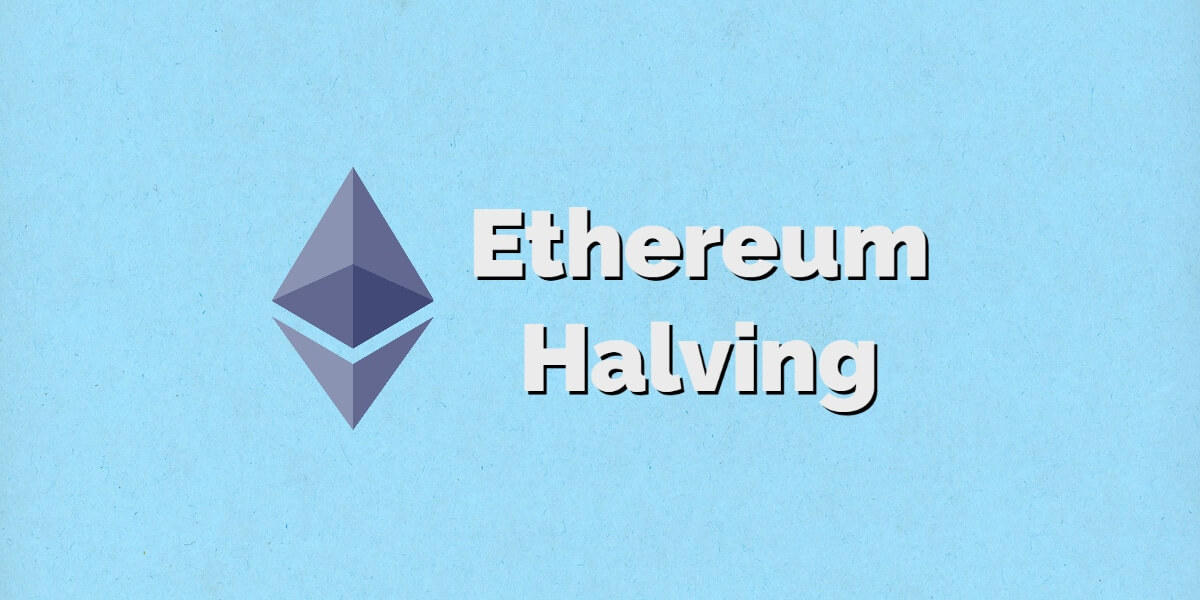
What is Ethereum Halving? Ethereum Triple Halving explained.
What is Ethereum halving? What are its consequences on ETH price? And what says the long-term price prediction for the ETH? If you are looking for the answers to these questions, here they are. But first, let’s see what halving really means in the crypto sector.
If you are into crypto, you probably know what Bitcoin halving is, just a reminder for those with a bad memory. Cryptocurrency halving occurs once in four years and represents the decrease in rewarding amounts for the crypto miners. In that way, the total supply of coins reduces. It happens to increase scarcity and increase the value of the crypto asset.
Now let’s delve into the Ethereum Halving process and see its purpose and how it impacts the performance of Ethereum.
What is the Ethereum triple halving event?
Ethereum has been in the process of implementing a significant upgrade known as Ethereum 2.0 (Eth2), which involves transitioning from a proof-of-work (PoW) consensus algorithm to a proof-of-stake (PoS) algorithm.
The Eth2 upgrade is being rolled out in multiple phases, to improve the scalability, security, and sustainability of the Ethereum network. One of the key changes in Ethereum 2.0 is the introduction of shard chains. Shard chains are subchains on the main Ethereum network. They allow the network to process multiple transactions and smart contracts simultaneously.
While the supply of ETH itself is not being reduced as part of the upgrade, the shift to a proof-of-stake consensus mechanism can indirectly affect the supply dynamics. In proof-of-stake, validators must lock up a certain amount of Ether (ETH) as a stake to participate in block validation. As more ETH gets locked up by validators, it can potentially reduce the circulating supply available for trading and increase the perceived scarcity of ETH.
The Ethereum Halving, also known as the Triple Halving, represents a burning mechanism that reduces the block reward from 3 ETH to 1 ETH. It occurs every 4-6 years to decrease the Ethereum network issuance rate, potentially increasing the price of ETH by capping the new ETH supply entering the crypto market.
The concept of “Triple Halving” is inspired by Bitcoin Halving. It refers to mining rewards halving every 4 years, but Ethereum’s block reward reduction is larger. Miners receive a lower block reward for verifying Ethereum blockchains transactions.
The Merge vs. Proof of Work vs. Proof of Stake

The Ethereum Merge represents an update for the Transition from PoW to PoS. The Merge transferred the network operations off the Ethereum Mainnet to the Ethereum Beacon Chain.
Triple halving goes in three different directions. These are a decrease in the issuance of the coins, burning of tokens, and finally, a significant number of staked Etheres that stay locked up.
Reduction in coins issuance
The Proof-of-Stake model will significantly reduce rewards for validating new Ethereum blocks, resulting in a projected decrease in the annual issuance of ETH from 4.3% to 0.4% after the Merge. This will cause a drastic drop in daily issuance, from approximately 15,000 ETH to about 1,500 ETH.
Following the Merge, it is anticipated that the Ethereum network’s productivity will improve, leading to a decrease in daily sell pressure on ETH from miners due to requiring fewer funds to secure the consumption energy necessary for their operations.
Burning mechanisms
During the London Hard Fork in 2022, the update EIP-1559 took place, introducing an Ethereum network system that should lead to deflation. This system comprises the burning of transaction fees portion that should result in adding to the general deflationary pressure on the network.
Staked ETH Withdrawals

The Proof of Stake consensus revolves around the individual staking of Ethereum via validators. Validators must secure the next block on the chain. Individuals can participate in staking, and they are rewarded for it. Rewards went up by 100 percent after the Ethereum Merge. The additional amount of ETH from staking is a deflationary pressure affecting the price of the crypto asset.
One of the big perks of The Merge is that it’s more eco-friendly. There is less consumption of energy during the validation process. Validators no longer have to run computers for days to mine coins. The proof of stake validation transition is expected to reduce energy consumption by 99.84%.
How Does Ethereum Triple Halving Affect the Price of ETH?
When the Ethereum Halving took effect, prices dropped by over 20%. The coin dropped from around $1,700 to roughly $1,200. The decline in cryptocurrency was mainly due to day traders engaging in speculative behavior before The Merge. However, after a brief period of being overvalued, The Merge helped stabilize the price of ETH. Since then, prices have fluctuated but have remained within a reasonable range and are steadily increasing. As of early February 2023, ETH is valued slightly above $1,640.
Triple halving is about long-term success and not short-term profit. Ethereum spokespeople outline that the main perk of the Ethereum halving is that it will prevent the ETH price from dropping while other cryptos will be prone to dip.




